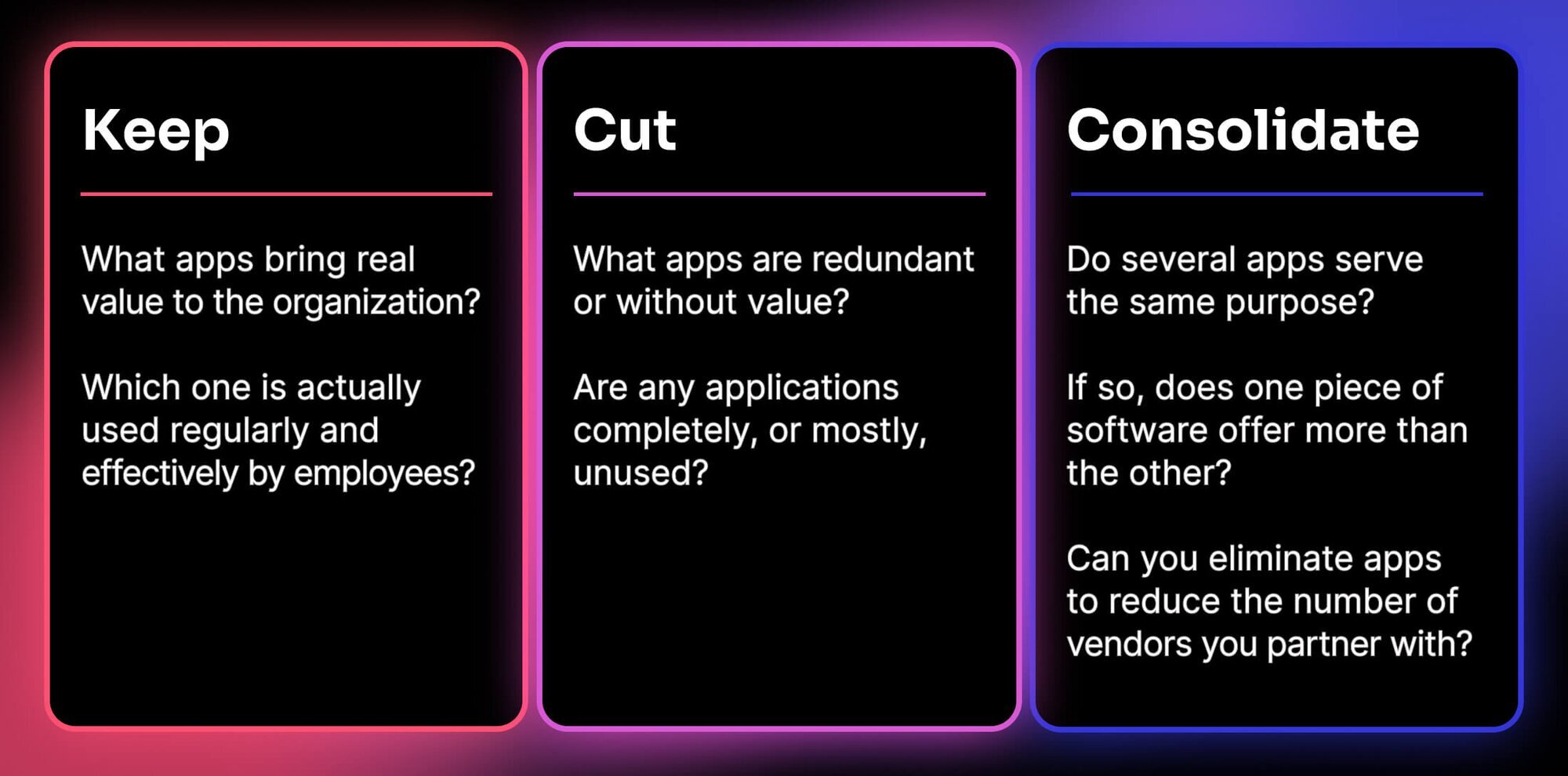The SaaS explosion has shifted organizations from buying standalone software to managing sprawling webs of licenses and subscriptions. The average enterprise now uses an average of over 660 different solutions.
CIOs have become strategists who must balance innovation and business needs with fiscal responsibility. You’re expected to equip employees with the best tech, control spend, drive ROI, eliminate redundancy, and support business outcomes—all while maintaining compliance and security.
Our new e-book, The CIO’s guide to optimizing software spend, is here to help make these complex challenges more manageable through clear, actionable management strategies.
お金を無駄にし、コンプライアンス上の問題を引き起こすような、従業員のソフトウェア体験の悪さにうんざりしていませんか?
Smarter cleanup with a strategic approach to software
Redundant or unused software doesn’t just drain your budget. It saps productivity and creates invisible, but noticeable, friction across your organization.
Frequently, companies don’t have a clear picture of what tools are being used and which are underused or just taking up space. Instead, there’s just a fragmented collection of use cases and needs. This leads to a few big problems:
- Support ticket overload: More tools lead to more training, troubleshooting, and maintenance requirements, which in turn creates a tidal wave of support tickets and an overwhelmed IT support team.
- Confusion and efficiency: When employees spend time bouncing between tools, trying to figure out which one applies to the current task, they aren’t working efficiently. And they’re dealing with confusion and frustration that can lead to burnout and attrition.
- Silos and duplication: Disparate apps across an organization will inevitably lead to the fragmentation of your data and your software… and your employees will feel the friction.
One way out of this mess is to evaluate it through the lens of the Keep, Cut, Consolidate matrix:
- Tools that show high adoption or provide clear value through features are marked as keep.
- Low usage and low-value apps can be marked as cut.
- In between high-value and low-value apps are those that have value but also significantly overlap with other solutions. In this case, you can decide on how different apps serve different needs and, where possible, consolidate them into a shorter list of vendors.
It’s possible to audit all your apps to make these decisions manually. It’s also tedious and prone to human error to go it alone. AI-assisted processes can help you gather useful data about some key KPIs for software, including open rates, unused features, wasted licenses, and usage trends over time.
With Pendo Analytics, you can identify friction points and risky behaviors early. These analytics tell you exactly what you need to know: who is using what apps, and when. These insights are essential for paring down your tech stack in a way that benefits your users.
Why this guide, and why now?
Throughout The CIO’s guide to optimizing software spend, you’ll learn to take cost management one step further and understand that software ROI is measured in outcomes, not just dollars.
First, we share a more nuanced ROI framework that prompts critical questions like:
- Is this tool improving employee performance?
- Is it tied to measurable business outcomes?
- Is it enhancing morale and user experience?
- Are there hidden support and compliance costs?
Then, we turn to onboarding. Without proper onboarding, even the best tools will be underused. Using Pendo Guides, your team can create contextual onboarding, including real-time in-app walkthroughs tailored to user behavior. It’s a key driver of software ROI.
Finally, the guide shows how support and compliance costs are often the hidden killers of ROI. With too many apps in play, your team can easily get buried under software support tickets and compliance risks.
Start your own transformation
If you’re ready to untangle your web of SaaS software, this guide is for you.
Download The CIO’s guide to optimizing software spend and build a leaner software stack.





